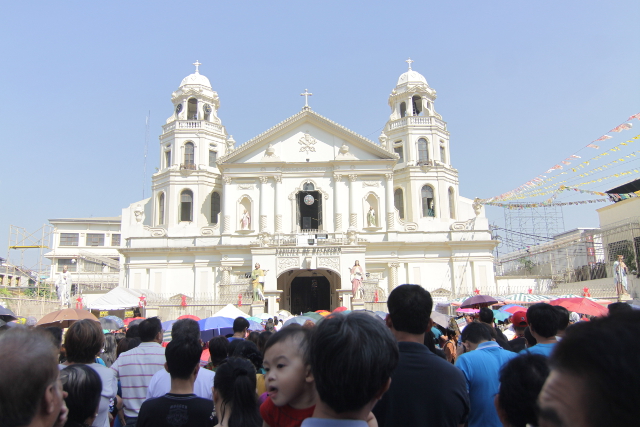Nine facts for nine days of the Black Nazarene
Every year, thousands upon thousands flock to either Quirino Grandstand or Quiapo Church for a chance to touch or at least have their handkerchiefs wiped on the face of the Black Nazarene, an image of Christ unbowed and half-kneeling under the weight of a brass-capped wooden cross while heavily adorned in a maroon tunic with gold thread and lace trimmings. This statue is said to work miracles.
While much of the culture of faith is better explained elsewhere, here are nine facts for the nine days that lead up to the famous procession.
1. The Black Nazarene is celebrating its 407th anniversary this year.
2. Two popes have officially recognized the image. In 1650, Pope Innocent X approved veneration of the statue and allowed a group of religious laymen to form in its name (the Confraternity of the Most Holy Jesus Nazarene), while in 1880, Pope Pius VII's Apostolic Blessing allegedly gave plenary indulgences to those who prayed to it.
3. The Minor Basilica of the Black Nazarene, otherwise known as the Quiapo Church, has a long history of rising from the ashes: its past is riddled with fires (1606 Chinese rebellion, the fires of 1791 and 1929), demolitions (1863), and earthquakes (the 1645 Luzon earthquake).

5. There were two statues once. The more popular one, belonging to the Recollects, was destroyed in the Liberation of Manila.
6. The body of the statue brought out every New Year's Day, the Nazarene's Feast Day, and Good Friday is a full-scale replica sculpted by santero Gener Malaqui. Only the head piece is from the original statue. Meanwhile, the replica's head is attached to the statue's real body. This is to protect the statue from further damage.
7. The 2012 Traslacion (meaning “passage”) was one of the longest processions in the history of the image, lasting a solid 22 hours even though the transfer from the grandstand to the church usually lasts five to 10 hours on average.
8. The carriage carrying the image is called “Andas” (Spanish for “andar,” or “to move forward”) and was originally made of silver until it sustained damage in 1976. In 2012, the carriage wheels broke and had to be replaced.
9. Devotees pull on the carriage with a pair of ropes 50 meters long. Only men were allowed to pull the rope, but in recent times, women have been allowed to do so as well. — Vida Cruz/BM, GMA News



